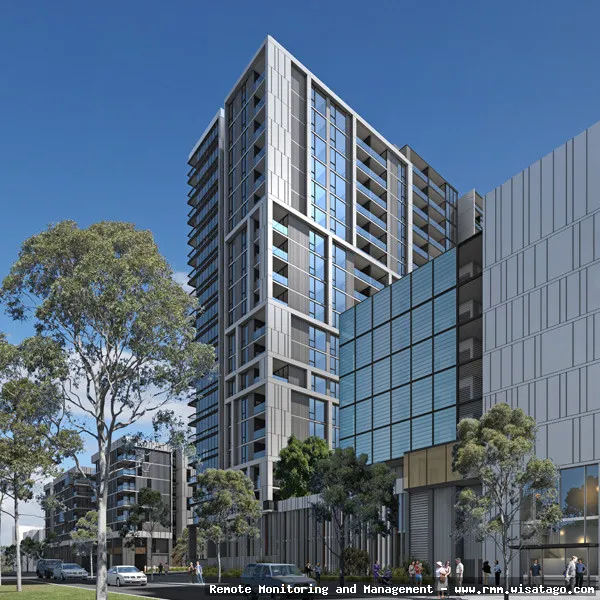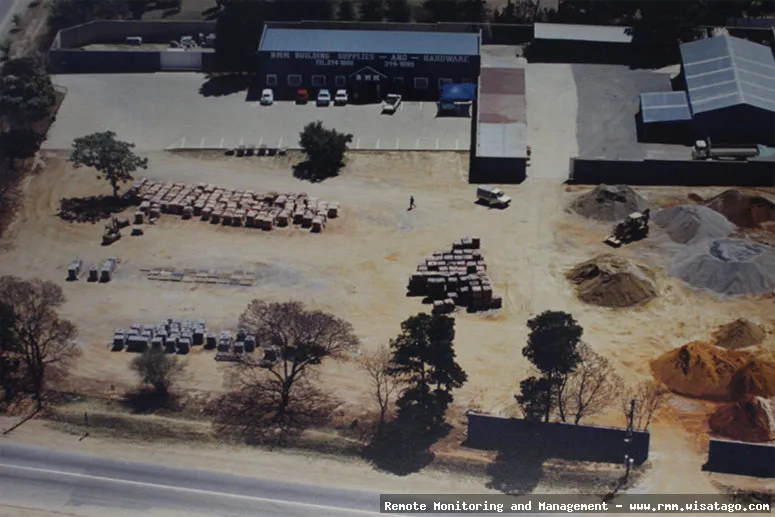Imagine walking into a modern commercial building. Lights automatically adjust, HVAC systems maintain a perfect temperature, and security systems seamlessly monitor every corner. These aren’t just isolated features; they’re interconnected systems working in harmony. Now, imagine managing all of these complex systems across multiple buildings from a single pane of glass. That’s where the integration of commercial building management systems (BMS) with Remote Monitoring and Management (RMM) platforms comes into play. It’s a game-changer for efficiency, cost savings, and proactive maintenance.
For years, building management was often a reactive process. A problem arose, someone reported it, and then a technician was dispatched. This approach is costly, disruptive, and often results in significant downtime. Integrating BMS with RMM allows for a proactive approach, where potential issues are identified and addressed before they escalate into major problems. Think of it as preventative medicine for your building’s infrastructure, constantly monitoring vital signs and alerting you to any anomalies.

In this article, we’ll dive deep into the world of commercial building management integration with RMM. We’ll explore the benefits, key features, implementation challenges, and future trends. Whether you’re an IT professional, a building manager, or simply curious about the intersection of technology and real estate, this guide will provide you with a comprehensive understanding of how RMM can revolutionize the way you manage your commercial buildings.
What is Commercial Building Management Integration with RMM?
Commercial Building Management Integration with RMM essentially means connecting your building’s operational systems (like HVAC, lighting, security, and energy management) to a remote monitoring and management platform. This connection allows IT professionals and building managers to remotely monitor, manage, and control these systems from a centralized location. Instead of relying on manual inspections and reactive maintenance, you gain real-time visibility into the building’s performance and can proactively address potential issues.
Key Components of a BMS–RMM Integration
A successful BMS–RMM integration typically involves the following components:
- Building Management System (BMS): The core system that controls and monitors various building functions. This includes sensors, controllers, and software that manage HVAC, lighting, security, and other systems.
- Remote Monitoring and Management (RMM) Platform: A software platform that allows IT professionals to remotely monitor and manage IT infrastructure, including servers, workstations, and network devices. In this context, it’s extended to encompass building systems.
- Integration Layer: The bridge that connects the BMS and RMM platforms. This often involves APIs (Application Programming Interfaces) or custom integrations to allow the RMM to collect data from the BMS and send commands back.
- Sensors and Devices: Physical devices throughout the building that collect data on temperature, humidity, occupancy, energy consumption, and other relevant metrics.
- Alerting and Reporting: The RMM platform’s ability to generate alerts based on predefined thresholds and provide comprehensive reports on building performance.
Benefits of Integrating BMS with RMM
The advantages of integrating BMS with RMM are numerous and can significantly impact a building’s operational efficiency and cost-effectiveness.
Proactive Maintenance and Reduced Downtime
One of the most significant benefits is the ability to proactively identify and address potential issues before they lead to major problems. For example, the RMM can monitor HVAC system performance and alert technicians to unusual energy consumption or temperature fluctuations, indicating a potential fault. This allows for preventative maintenance, reducing the risk of costly breakdowns and minimizing downtime.
Improved Energy Efficiency and Cost Savings
RMM provides real-time data on energy consumption, allowing building managers to identify areas where energy is being wasted. By analyzing this data, they can optimize HVAC settings, adjust lighting schedules, and identify malfunctioning equipment that is consuming excessive energy. This leads to significant cost savings on energy bills and reduces the building’s environmental footprint.
Enhanced Security and Safety
Integration with security systems allows for remote monitoring of access control, surveillance cameras, and alarm systems. RMM can provide real-time alerts in case of security breaches or emergencies, enabling a faster and more effective response. Furthermore, monitoring environmental sensors can detect potentially dangerous conditions like gas leaks or carbon monoxide buildup, ensuring the safety of building occupants.
Centralized Management and Control
RMM provides a single pane of glass for managing all building systems, eliminating the need to juggle multiple platforms and interfaces. This simplifies management, improves efficiency, and allows for faster decision-making. Technicians can remotely access and control building systems, diagnose problems, and perform troubleshooting without having to physically be on-site.

Data-Driven Decision Making
The wealth of data collected by the RMM platform provides valuable insights into building performance. This data can be used to identify trends, optimize operations, and make informed decisions about future investments. For example, analyzing occupancy data can help optimize HVAC schedules and reduce energy consumption during periods of low occupancy.
Key Features of a BMS–RMM Integration
The specific features of a BMS–RMM integration will vary depending on the platforms used and the specific needs of the building. However, some key features are essential for a successful integration.
Real-time Monitoring and Alerting
The ability to monitor building systems in real-time and receive alerts when predefined thresholds are exceeded is crucial for proactive maintenance and rapid response to emergencies. Alerts should be customizable and configurable based on specific parameters and priorities.
Remote Access and Control
Remote access and control capabilities allow technicians to remotely diagnose problems, perform troubleshooting, and make adjustments to building systems. This reduces the need for on-site visits and enables faster resolution of issues.
Reporting and Analytics
Comprehensive reporting and analytics features provide valuable insights into building performance, energy consumption, and system health. Reports should be customizable and allow for trend analysis and identification of areas for improvement.
Integration with Other Systems
The ability to integrate with other systems, such as ticketing systems, asset management systems, and building automation platforms, streamlines workflows and improves overall efficiency.
Security and Compliance
Robust security measures are essential to protect sensitive building data and prevent unauthorized access. The integration should comply with relevant industry standards and regulations.
Challenges in Implementing BMS–RMM Integration
While the benefits of BMS–RMM integration are significant, there are also challenges that need to be addressed during implementation.

Integration Complexity
Integrating different BMS and RMM platforms can be complex, especially if they use different protocols and data formats. Custom integrations may be required to ensure seamless communication and data exchange.
Data Security and Privacy
Connecting building systems to the internet raises concerns about data security and privacy. It’s crucial to implement robust security measures to protect sensitive data from unauthorized access and cyber threats.
Legacy Systems
Many commercial buildings have legacy BMS systems that may not be easily compatible with modern RMM platforms. Upgrading or replacing these systems can be costly and disruptive.
Training and Expertise
Implementing and managing a BMS–RMM integration requires specialized knowledge and expertise. IT professionals and building managers need to be trained on the new platform and processes.
Cost Considerations
The cost of implementing a BMS–RMM integration can be significant, including the cost of software, hardware, and integration services. It’s important to carefully evaluate the costs and benefits before proceeding.
Best Practices for Successful Integration
To ensure a successful BMS–RMM integration, consider the following best practices:
Thorough Planning and Assessment
Start with a thorough assessment of your building’s needs and requirements. Identify the systems that need to be integrated and the goals you want to achieve. Develop a detailed plan that outlines the scope of the project, the resources required, and the timeline.
Choose the Right Platforms
Carefully evaluate different BMS and RMM platforms and choose the ones that best meet your needs and budget. Consider factors such as compatibility, scalability, security, and ease of use.

Prioritize Security
Implement robust security measures to protect sensitive building data and prevent unauthorized access. This includes using strong passwords, implementing multi-factor authentication, and regularly patching and updating software.
Provide Adequate Training
Provide adequate training to IT professionals and building managers on the new platform and processes. This will ensure that they can effectively manage the system and troubleshoot any issues that arise.
Monitor and Optimize
Continuously monitor the performance of the integrated system and optimize it to achieve the desired results. This includes regularly reviewing reports, analyzing data, and making adjustments to settings and configurations.
The Future of BMS–RMM Integration
The future of BMS–RMM integration is bright, with advancements in technology driving even greater efficiency and automation. We can expect to see:
Increased Use of AI and Machine Learning
AI and machine learning will play a greater role in analyzing building data, predicting potential issues, and optimizing system performance. This will lead to even more proactive maintenance and energy savings.
Greater Integration with IoT Devices
The proliferation of IoT devices in commercial buildings will lead to even more data being collected and analyzed by RMM platforms. This will provide a more comprehensive view of building performance and enable more granular control.
Cloud-Based Solutions
Cloud-based RMM solutions will become increasingly popular, offering greater scalability, flexibility, and cost-effectiveness. This will make BMS–RMM integration more accessible to smaller and medium-sized businesses.
Enhanced Cybersecurity
With the increasing threat of cyberattacks, cybersecurity will become an even greater priority. RMM platforms will need to incorporate advanced security features to protect building systems from cyber threats.

. For more information, you can refer to RMM as an additional resource.
In conclusion, commercial building management integration with RMM is a powerful tool for improving efficiency, reducing costs, and enhancing safety in commercial buildings. While there are challenges to overcome, the benefits are significant and the future of this technology is promising. By following best practices and staying informed about the latest trends, you can leverage RMM to transform the way you manage your commercial buildings and create a smarter, more sustainable environment.
Conclusion
The integration of Commercial Building Management Systems (CBMS) with Remote Monitoring and Management (RMM) platforms represents a paradigm shift in how buildings are operated and maintained. Throughout this article, we have explored the multifaceted benefits, ranging from enhanced operational efficiency and proactive maintenance to improved security and significant cost savings. By leveraging the power of RMM, building managers can gain unprecedented visibility into their building’s performance, allowing for data-driven decision-making and a more streamlined approach to managing complex systems. This synergistic relationship between CBMS and RMM is not merely a technological upgrade; it’s a strategic imperative for any organization seeking to optimize its building operations in today’s competitive landscape.
In conclusion, adopting an integrated CBMS and RMM solution is no longer a luxury, but a necessity for modern commercial buildings. The improved efficiency, reduced downtime, and enhanced security demonstrate a clear return on investment. As the technology continues to evolve, early adopters will be best positioned to capitalize on these advancements. If you’re looking to revolutionize your building management strategy and unlock the full potential of your building’s infrastructure, we encourage you to explore available RMM solutions and consider how they can be integrated with your existing CBMS. Take the first step towards a smarter, more efficient, and more secure building today; visit www.example.com/rmm-solutions to learn more about available solutions.
Frequently Asked Questions (FAQ) about Commercial Building Management Integration with RMM
What are the key benefits of integrating a commercial building management system (BMS) with a remote monitoring and management (RMM) platform?
Integrating a commercial building management system (BMS) with a remote monitoring and management (RMM) platform offers numerous advantages. Primarily, it provides a centralized view of building operations, allowing for proactive identification and resolution of issues before they escalate. This leads to reduced downtime and improved operational efficiency. RMM integration enables remote access and control of BMS functions, such as HVAC, lighting, and security systems, minimizing the need for on-site visits and reducing labor costs. Furthermore, the aggregated data from the BMS and RMM can be analyzed to identify trends, optimize energy consumption, and improve overall building performance. Enhanced security monitoring and faster response times to alarms are also significant benefits, contributing to a safer and more secure environment for occupants.
How does integrating a commercial building’s HVAC system with RMM software improve energy efficiency and reduce operational costs for property managers?
Integrating a commercial building’s HVAC system with RMM software provides property managers with enhanced control and visibility, directly contributing to improved energy efficiency and reduced operational costs. RMM allows for real-time monitoring of HVAC performance, including temperature, humidity, and equipment status. This enables proactive identification of inefficiencies, such as malfunctioning equipment or suboptimal settings. Property managers can then remotely adjust settings, schedule maintenance, and optimize performance based on real-time data. For example, temperature setpoints can be adjusted based on occupancy levels, and equipment can be automatically turned off during unoccupied periods. Furthermore, predictive maintenance capabilities enabled by RMM can prevent costly breakdowns and extend the lifespan of HVAC equipment. The result is reduced energy consumption, lower utility bills, and decreased maintenance expenses, leading to significant cost savings for property managers.
What security considerations and data privacy protocols should be addressed when connecting a commercial building management system to a remote monitoring and management (RMM) solution?
Connecting a commercial building management system (BMS) to a remote monitoring and management (RMM) solution requires careful consideration of security and data privacy. Robust security protocols, such as strong encryption for data in transit and at rest, are essential to protect sensitive building and occupant information. Access control mechanisms should be implemented to restrict access to authorized personnel only, with multi-factor authentication recommended. Regular security audits and vulnerability assessments are crucial to identify and address potential weaknesses. Data privacy protocols, such as compliance with GDPR or other relevant regulations, must be adhered to, ensuring that personal data is handled responsibly and with consent. Furthermore, the RMM vendor should have a strong security track record and demonstrate compliance with industry security standards. A comprehensive security plan, including incident response procedures, should be in place to address any security breaches or data privacy incidents promptly and effectively.